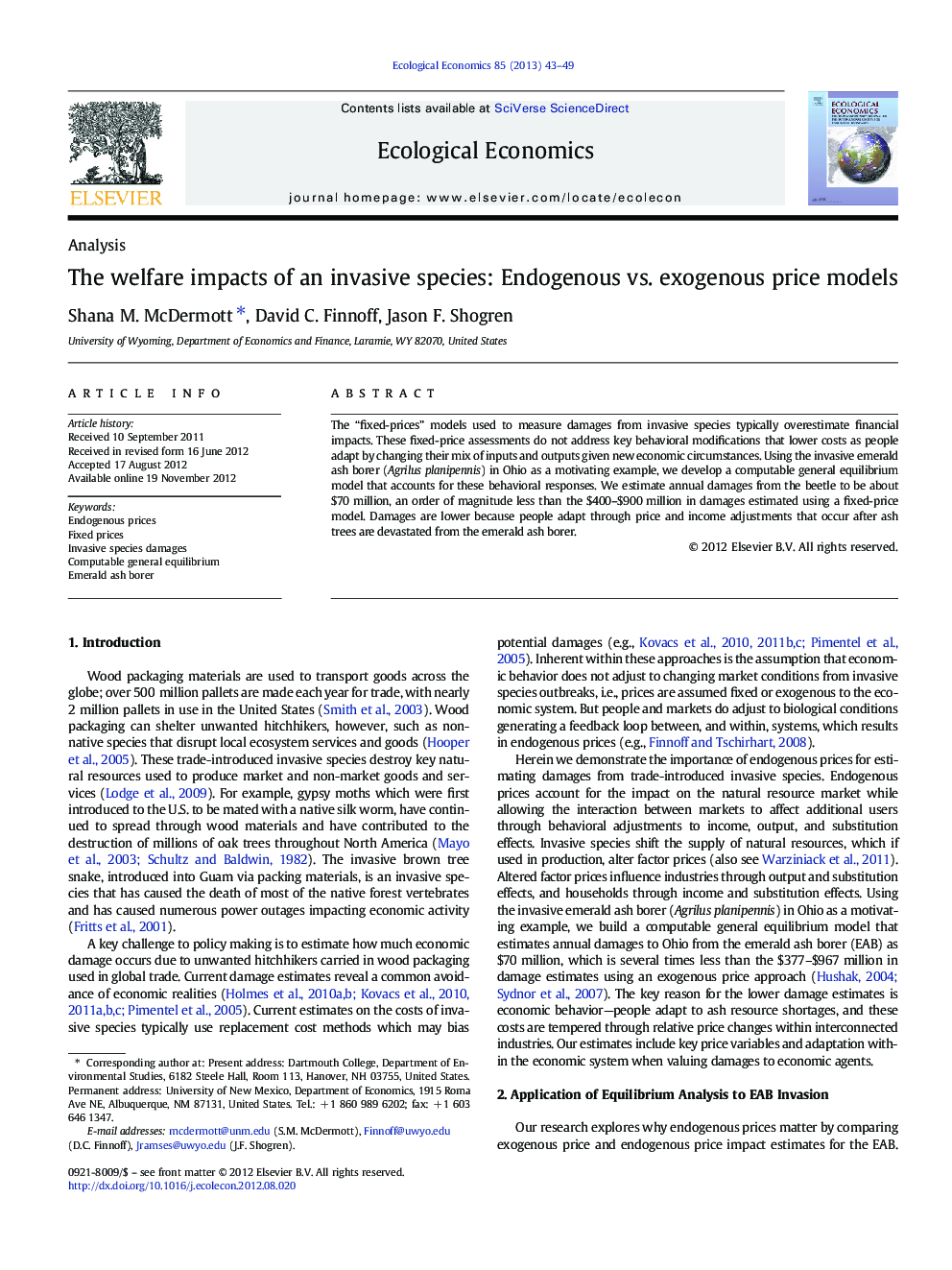| Article ID | Journal | Published Year | Pages | File Type |
|---|---|---|---|---|
| 5050205 | Ecological Economics | 2013 | 7 Pages |
The “fixed-prices” models used to measure damages from invasive species typically overestimate financial impacts. These fixed-price assessments do not address key behavioral modifications that lower costs as people adapt by changing their mix of inputs and outputs given new economic circumstances. Using the invasive emerald ash borer (Agrilus planipennis) in Ohio as a motivating example, we develop a computable general equilibrium model that accounts for these behavioral responses. We estimate annual damages from the beetle to be about $70Â million, an order of magnitude less than the $400-$900Â million in damages estimated using a fixed-price model. Damages are lower because people adapt through price and income adjustments that occur after ash trees are devastated from the emerald ash borer.
⺠We measure invasive species damages using endogenous price and fixed-price models. ⺠Income, output and substitution effects are not addressed in fixed price models. ⺠A computable general equilibrium model calculates emerald ash borer damages. ⺠Our endogenous price estimates are half of the losses from fixed-price models. ⺠Endogenous prices allow for behavioral responses to changing market conditions.
